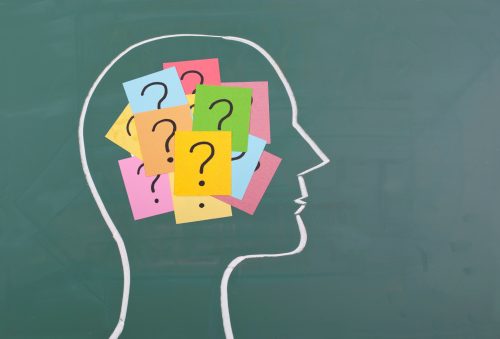

Brain Res 457(1):143–147ĭavitz JR, Mason DJ (1955) Socially facilitated reduction of a fear response in rats. Psychopharmacology (Berl) 91(3):363–368ĭantzer R, Koob GF, Bluthé RM, Le Moal M (1988) Septal vasopressin modulates social memory in male rats. Neuropeptides 41(3):145–163ĭantzer R, Bluthe RM, Koob GF, Le Moal M (1987) Modulation of social memory in male rats by neurohypophyseal peptides. Psychoneuroendocrinology 23(8):779–818Ĭrawley JN, Chen T, Puri A, Washburn R, Sullivan TL, Hill JM et al (2007) Social approach behaviors in oxytocin knockout mice: comparison of two independent lines tested in different laboratory environments.

Brain Res Bull 40(4):245–251Ĭarter CS (1998) Neuroendocrine perspectives on social attachment and love. Behav Brain Res 214(1):80–84Ĭalderazzo L, Cavalheiro EA, Macchi G, Molinari M, Bentivoglio M (1996) Branched connections to the septum and to the entorhinal cortex from the hippocampus, amygdala, and diencephalon in the rat. Journal of Traumatic Stress 8(2):317–336īruchey AK, Jones CE, Monfils MH (2010) Fear conditioning by-proxy: social transmission of fear during memory retrieval. Neuroscience 253:155–164īoscarino JA (1995) Post-traumatic stress and associated disorders among Vietnam veterans: the significance of combat exposure and social support. Eur J Neurosci 27(8):1947–1956īoccia ML, Petrusz P, Suzuki K, Marson L, Pedersen CA (2013) Immunohistochemical localization of oxytocin receptors in human brain. J Comp Physiol Psychol 67(3):370–375īlume A, Bosch OJ, Miklos S, Torner L, Wales L, Waldherr M et al (2008) Oxytocin reduces anxiety via ERK1/2 activation: local effect within the rat hypothalamic paraventricular nucleus. Eur Neuropsychopharmacol 18(8):578–588īlanchard RJ, Blanchard DC (1969) Crouching as an index of fear. Soc Cogn Affect Neurosci 6(5):556–563īignante EA, Rodriguez Manzanares PA, Mlewski EC, Bertotto ME, Bussolino DF, Paglini G et al (2008) Involvement of septal Cdk5 in the emergence of excessive anxiety induced by stress. Proc Natl Acad Sci U S A 107(50):21371–21375īartz J, Simeon D, Hamilton H, Kim S, Crystal S, Braun A et al (2011) Oxytocin can hinder trust and cooperation in borderline personality disorder. Behav Modif 12(1):100–115īartz JA, Zaki J, Ochsner KN, Bolger N, Kolevzon A, Ludwig N et al (2010) Effects of oxytocin on recollections of maternal care and closeness. Crit Rev Neurobiol 10(1):119–154īarrett TW, Mizes JS (1988) Combat level and social support in the development of posttraumatic stress disorder in Vietnam veterans. Rinehart & Winston, New York Holtīarberis C, Tribollet E (1996) Vasopressin and oxytocin receptors in the central nervous system. Rinehart & Winston, New York Holtīandura A (1969b) Vicarious and self-reinforcement processes. Neuropsychopharmacology 36(12):2488–2497īandura A (1969a) Principles of behavior modification. Psychological Bulletin 129(6):887–913Īyers LW, Missig G, Schulkin J, Rosen JB (2011) Oxytocin reduces background anxiety in a fear-potentiated startle paradigm: peripheral vs central administration. Behav Brain Res 149(1):17–31Īllen NB, Badcock PBT (2003) The social risk hypothesis of depressed mood: evolutionary, psychosocial, and neurobiological perspectives. These findings explain, at least in part, the seemingly bidirectional role of Oxt in fear regulation.Īhi J, Radulovic J, Spiess J (2004) The role of hippocampal signaling cascades in consolidation of fear memory. The septal oxytocin system enhances memory of social interactions regardless of their valence, reducing fear after positive and enhancing fear after negative social encounters. ResultsĪntagonism and down-regulation of Oxtr in the lateral septum abolished, while oxytocin (Oxt) administration before pre-exposure to nonfearful conspecifics facilitated the decrease of freezing behavior. Pharmacological and genetic manipulations of lateral septal Oxtr were combined with the social buffering of fear paradigm, in which pre-exposure to nonfearful conspecifics reduces subsequent contextual fear conditioning, as revealed by decreased freezing behavior. Using positive social interactions, which impair fear conditioning, here we attempted to delineate whether the role of septal Oxtr in fear regulation depends on the valence of the social memory. Contrary to the anxiolytic actions of Oxtr in the amygdala, we recently showed that Oxtr in the lateral septum mediate the enhancement of fear conditioning by social defeat in mice. Oxytocin receptors (Oxtr) are important mediators of social learning and emotion, with bidirectional effects on fear and anxiety.


 0 kommentar(er)
0 kommentar(er)
